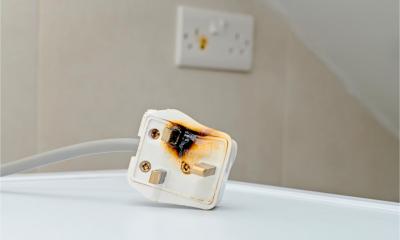
When you run a business, you're legally required to ensure there's a high standard of electrical safety within the workplace
Portable electrical equipment should be checked and maintained to minimise the risk of accidents and injury. However, most equipment in an office environment will pose little risk. So, what are your obligations?
Maintaining computer health and safety is essential. Portable appliance testing (PAT) helps to ensure electrical safety at work. Faulty equipment could cause electric shocks, burns or even start a fire.
What is portable electrical equipment?
Portable electrical equipment is any item that can be moved whilst connected or disconnected from the power supply. Most IT equipment, mobile devices and electrical items in the office or workplace - such as desk lamps and fans, kettles and hoovers - will come into this category.
What are my responsibilities for electrical safety of this equipment in the office?
You must ensure all computer equipment is safe. The rules apply to employers, the self-employed and employees alike. However, the law does not specify how frequently tests must be carried out to ensure safety.
It's a myth that portable electrical equipment and appliances must be checked every year. The frequency of checks will depend on the type electrical equipment used, where it's used, what it's used for and the risk of it becoming damaged.
In many low-risk environments - such as offices, shops and call centres - the equipment being used will pose little threat. Most computers, printers, servers and computer accessories will come with pre-wired plugs and cables. In many cases, a quick visual check of such equipment will suffice. You should check that there are no loose or exposed wires, no signs of damage or overheating and that the plug has the correct fuse.
Other issues you need to be aware of is the rise of bring-your-own-device and the use of non-original (or compatible accessories). We have all seen the stories of fires caused by cheap, supposedly compatible charging cables and plugs that have overheated and caused a fire. Caution should always be exercised, and devices shouldn't be left unattended whilst charging. Employees may also be using their own mobile phones and devices in the workplace. If you allow this, any most businesses do, you and your employee need to be satisfied the equipment is safe.
Ensuring electrical safety at work
Although the risks from computer and IT equipment are generally low, many portable devices - such as laptop and tablet computers and mobile phones - have wires that are frequently plugged in and unplugged as employees move from one workspace to another. This can mean that the power cable and plug can become damaged or loose if they are not used correctly. A quick visual inspection can help ensure these devices remain safe.
There are a number of simple steps you can take to ensure your other equipment is safe:
- encourage employees to carry out quick checks of equipment and power supplies before they use them;
- carry out regular visual checks - the frequency required will depend on what the equipment is;
- arrange portable appliance tests for any Class 1 equipment (any appliance with an earth connection) that have not been double-insulated;
- remove damaged or faulty equipment and ensure it is repaired by a competent person or is disposed of before anyone can be injured by it;
- review your electrical safety maintenance schedule - you may be able to reduce the frequency of your inspection and testing; and
- consider whether it’s helpful to keep records of electrical safety at work inspections and tests.
- avoid the use of non-original, compatible charging plugs and cables.
User checks and visual inspections can be carried out by anyone. Equally, a portable appliance test does not need to be carried out by an electrician. However, the person carrying out the test must be competent, be appropriately trained and have the correct testing equipment.
They also need to know how to interpret the results of the tests to maintain electrical safety at work.
The Health and Safety Executive has produced a practical guide to maintaining portable electrical devices in low-risk environments. It has also produced more detailed guidance on portable electrical equipment and answers to a series of frequently asked questions on portable appliance testing.



